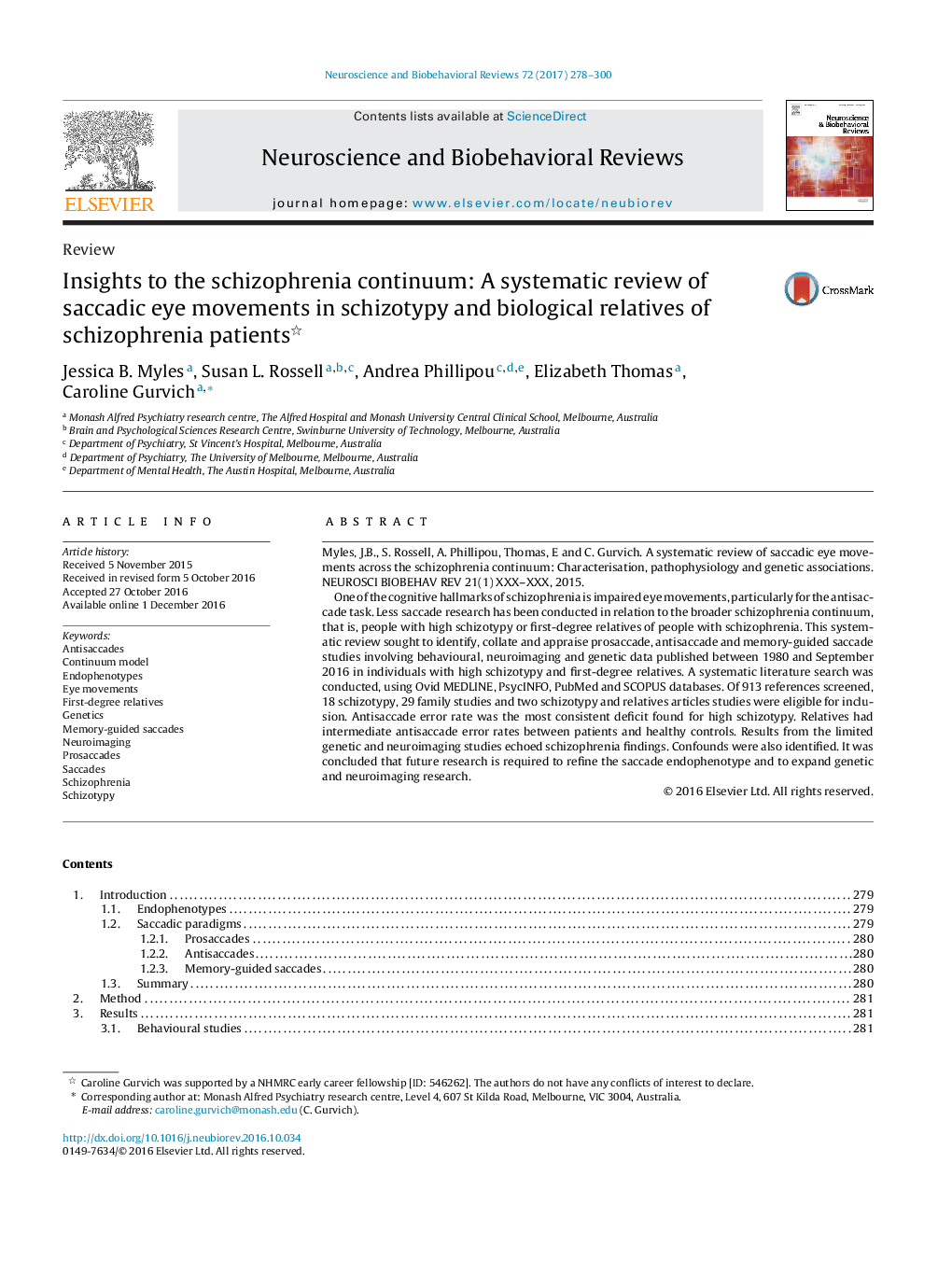| Article ID | Journal | Published Year | Pages | File Type |
|---|---|---|---|---|
| 5043656 | Neuroscience & Biobehavioral Reviews | 2017 | 23 Pages |
â¢Saccade studies in schizotypy and schizophrenia relatives were systematically reviewed.â¢Antisaccade error rate was the most consistent deficit found for schizotypy.â¢Relatives had intermediate antisaccade error rates between patients and controls.â¢Genetic and neuroimaging studies echoed findings in schizophrenia research.â¢Potential confounds include inclusion of parents, low schizotypy and smoking.
Myles, J.B., S. Rossell, A. Phillipou, Thomas, E and C. Gurvich. A systematic review of saccadic eye movements across the schizophrenia continuum: Characterisation, pathophysiology and genetic associations. NEUROSCI BIOBEHAV REV 21(1) XXX-XXX, 2015.One of the cognitive hallmarks of schizophrenia is impaired eye movements, particularly for the antisaccade task. Less saccade research has been conducted in relation to the broader schizophrenia continuum, that is, people with high schizotypy or first-degree relatives of people with schizophrenia. This systematic review sought to identify, collate and appraise prosaccade, antisaccade and memory-guided saccade studies involving behavioural, neuroimaging and genetic data published between 1980 and September 2016 in individuals with high schizotypy and first-degree relatives. A systematic literature search was conducted, using Ovid MEDLINE, PsycINFO, PubMed and SCOPUS databases. Of 913 references screened, 18 schizotypy, 29 family studies and two schizotypy and relatives articles studies were eligible for inclusion. Antisaccade error rate was the most consistent deficit found for high schizotypy. Relatives had intermediate antisaccade error rates between patients and healthy controls. Results from the limited genetic and neuroimaging studies echoed schizophrenia findings. Confounds were also identified. It was concluded that future research is required to refine the saccade endophenotype and to expand genetic and neuroimaging research.
